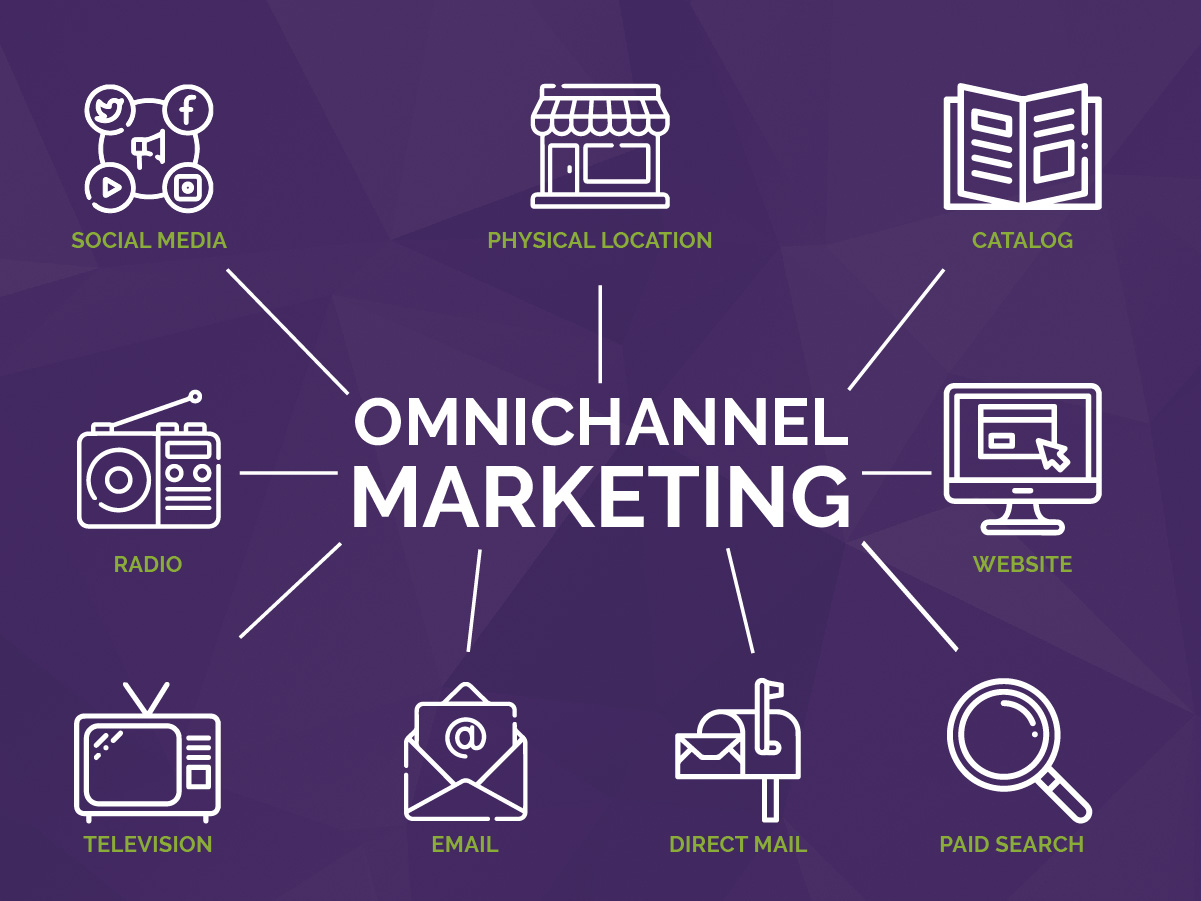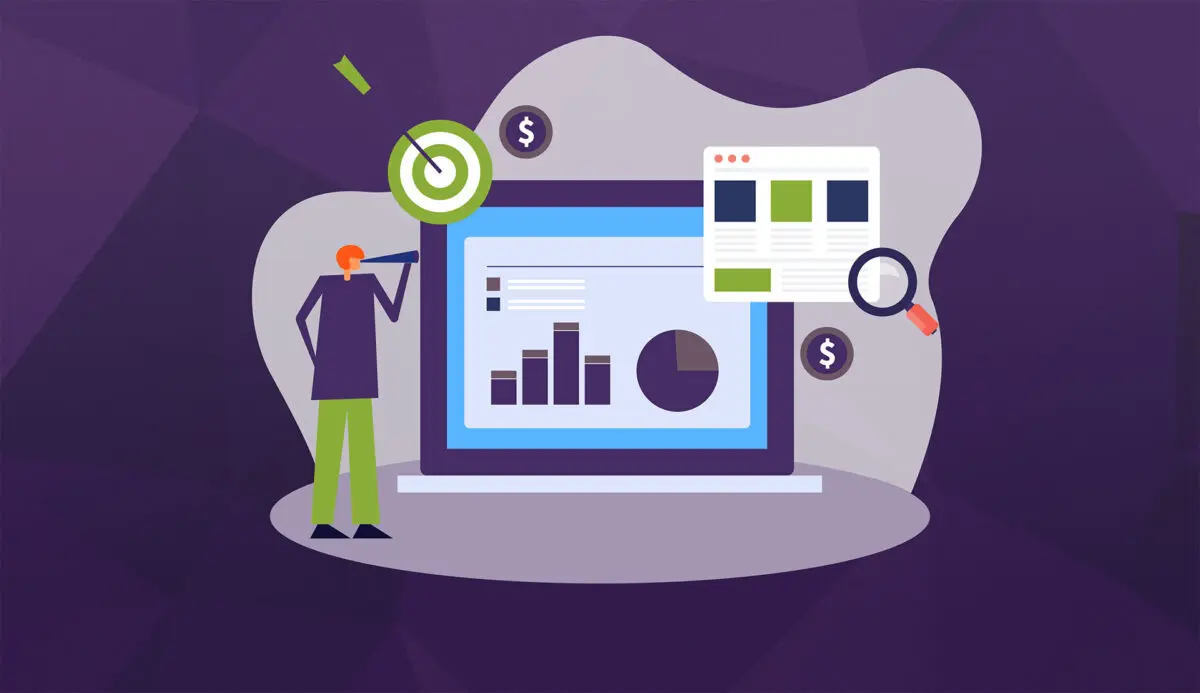Published: September 28, 2022
Creating an omnichannel marketing strategy might seem intimidating, but once you understand why it’s so important, you’ll be implementing it in no time. In this definitive guide to omnichannel marketing, we explore how it became the essential marketing practice it is today.
We’ll dive into the different omnichannel tactics you can use to make your business flourish in the ever-changing retail landscape. So buckle up—this article gets pretty detailed, but there’s no better time than now to learn about omnichannel marketing!
What is Omnichannel Marketing Anyway?
Omnichannel marketing is a strategy used to meet customers at every interaction point in their journey, from content discovery and product research all the way through to loyalty and repurchase.

This holistic approach to marketing strategy usually involves these key elements:
- Brand tone and vision that are consistent and recognizable
- Targeted messaging based on individual interests
- Content informed by previous interactions and the present stage of the buyer’s journey
With Omnichannel marketing, you can communicate with your prospects across multiple channels – such as email, SMS messaging and social media – to get them closer to becoming loyal customers.
Today, an omnichannel strategy is needed to remain competitive. With so many retailers operating on an omnichannel basis, those using only a single channel are at risk of missing out on business opportunities.
Targeting New Customers
An omnichannel marketing strategy will help you reach new customers, foster loyalty and increase your revenue. By understanding how it can work for your business, you’ll be well-positioned to implement one.
Omnichannel marketing allows you to build a relationship with your customers and makes it easier for them to buy from you again. It’s an effective tool for retaining customers, building loyalty and increasing revenue. It can also help to lower costs by enabling you to use resources across multiple channels to increase conversions on existing traffic and attract more potential customers.
Sounds Complicated… Why Omnichannel Marketing?
Many businesses use omnichannel marketing to integrate the customer experience across all channels and media. This approach is advantageous for several reasons. It allows marketers to optimize their customer engagement strategies and maintain brand consistency, which leads to successful campaigns.
Omnichannel marketing integrates traditional and digital advertising channels, combining physical and virtual communication. Some channels include mobile apps, social media platforms like Facebook or Twitter, TV ads, print ads and search engine optimization (SEO).
Enhancing the User Experience
Omnichannel marketing is beneficial because it supports customer experience on all devices. Customers can engage with your brand in any way they choose. Omnichannel enables brands to develop a consistent message across all communication channels by creating a specific purpose for each channel to accomplish its goals.
Many businesses use integrated marketing to create a more comprehensive understanding of their customers and business. Integrating channels creates a multidimensional view of customers, which leads to more effective strategies that meet customer needs.
How to Implement Omnichannel in Your Business
Marketers can implement omnichannel marketing into their campaigns in one of two ways: a marketing strategy focused on the consumer or a marketing agency to help them execute all channels.
For example, a brand could use social media to engage with its audience and then have the customer purchase directly from its website. On the other hand, marketers can work with an agency that can handle all aspects of the campaign to simplify things.
Rolling Up Those Marketing Sleeves
You need to consider three factors when implementing omnichannel marketing in your business.
Is an omnichannel approach right for your brand?
First, you need to decide whether or not it makes sense for you and your brand. Not all brands will adapt well to this approach, so it is essential to consider your long-term goals first.
Do your goals match your current strategies?
Second, you need to consider if your campaign goals align with their strategies. If your goals and strategies are not aligned, it might be time to shake things up.
Does your brand have the time and money to invest in omnichannel marketing?
Third, you need to consider your business resources and determine how much time and money you can invest in executing an omnichannel marketing strategy. As long as your goals align with their strategies, any company can successfully implement omnichannel marketing into their campaign.
Omnichannel marketing agencies will typically charge a flat fee or take a commission based on your campaign’s performance. Their implementation fees are generally less than you’d pay to build a team and hire an in-house marketer, so they may be more cost-effective if you aren’t sure how your business will grow.
Best Practices for Setting Up Your Killer Omnichannel Strategy

One of the biggest things to consider with omnichannel marketing is ensuring the customer’s seamless experience, even if they switch from one channel to another.
To achieve this, you will need to integrate your marketing messages and product offerings in a way that does not break the flow of the customer’s journey. You can do this by providing them with information about what content is available on each channel and linking them to it.
5 Best Practices for Omnichannel Marketing
The key question is, how important is it to provide your customers consistency and user experience while they switch between channels? If you are delivering a complex product or service that requires a long sales cycle, it will be essential to streamline and simplify your message across all channels.
However, if your product or service is consumable and quick to buy, then it might not be worth making a significant effort to replicate your marketing efforts on different platforms.
There are many best practices for setting up omnichannel marketing, so we’ve decided to identify some of them that may help you further understand what omnichannel is.
1. User Data Collection
Accurate and timely data collection about your customers and their interactions is critical for executing an omnichannel strategy. This data may assist you in determining when and on what devices your primary audience prefers to connect with businesses, what type of message they are much more likely to engage with, and what things and services they want. This user data is key to a successful omnichannel approach.
2. Analyzing User Data
Collecting data is just the beginning. However, this data is not exactly helpful if you don’t have the team or the resources to translate big data into actionable insights. In order to meet client demands, brands must deploy an analytics platform that can compile all of this data in almost real-time, enabling teams to make adjustments as campaigns are running.
3. Mapping the Full Customer Journey
Before launching an omnichannel campaign, businesses should create customer journey maps for each target audience. The customer journey map evaluates the client’s behavior between discovering the brand and purchasing from it.
Outlining these maps enables marketers to design more focused campaigns by considering individual preferences, user experience, interface and elements beyond the brand’s control that may influence the route to buy, such as economic issues.
4. Establishing Consistent Brand Guidelines
Organizations must create a brand identity with a defined message and creative standards. Brands should follow these principles across all platforms to promote brand recognition and awareness through a consistent message.
Another way for businesses to create an omnichannel experience is to utilize brand tracking tools to analyze and predict the health of their brand in customers’ minds.
5. Testing, Re-testing, and Optimization
One of the most crucial aspects of an omnichannel marketing plan is regularly evaluating the effectiveness of your approach. The marketing team may then optimize campaign costs, creativity, messaging and other factors.
Today’s enterprises should use media planning tools (see how to avoid automation pitfalls) that can perform “what if” scenarios that consider budget, target audience, numerous KPIs and media mix to give a detailed media plan that can optimize ROI and guide future decision-making.
Final Thoughts
Omnichannel marketing ensures that clients can begin the purchasing process on any device, anywhere, at any time. A pleasant and tailored consumer experience throughout all marketing channels and devices is a huge step toward increased sales.
Your omnichannel marketing process should include:
- A blueprint of the omnichannel customer journey.
- Marketing channels that are most popular with your customers.
- In-depth segmentation to customize user’s experience.
- Omnichannel customer service to all online buying platforms.
- Omnichannel marketing or attribution software.
If the omnichannel approach sounds right for you and your brand, Envano’s digital marketing experts are here to help. If you need help or want more information about transforming your marketing strategies, give us a call or fill out our contact form.



